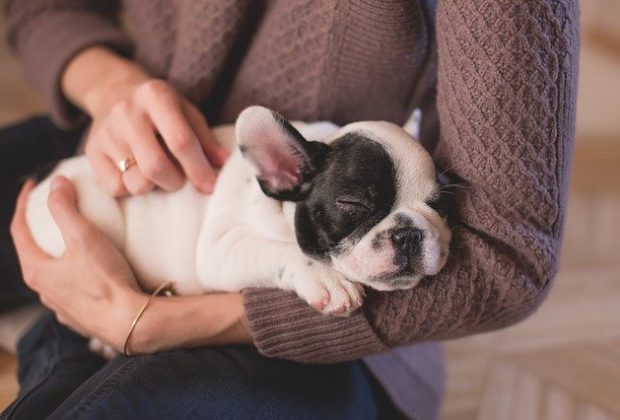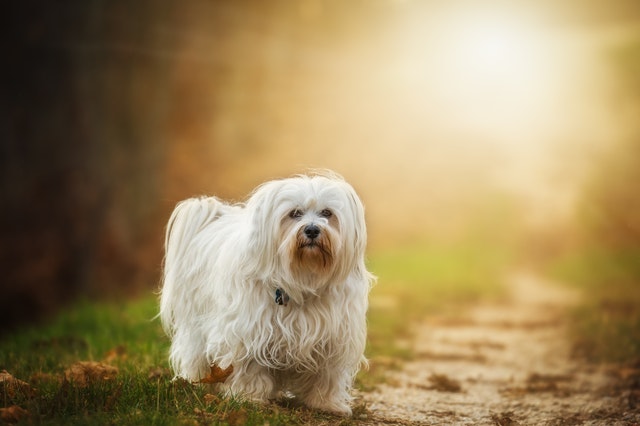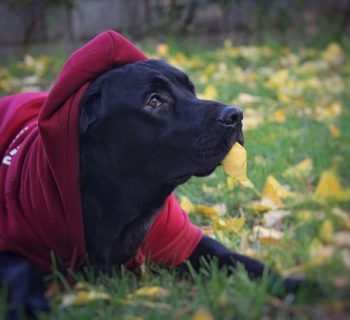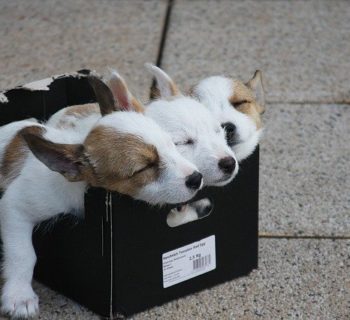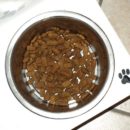Just like humans, dogs enjoy touches, and you'll find out why in this article. We'll also share some helpful tips for petting your dog, areas you should avoid when petting him, how to pet a dog correctly, how to know if your dog does not enjoy petting, and things you can do when a dog doesn't seem to like being petted.
So if you are wondering why do dogs like to be pet, let's talk you through everything you need to know.
Table of Contents
Why Do Dogs Love It When They Are Being Pet?
It Is a Part of Human-Canine Communication.
Thanks to thousands of years of living with humans, the two (humans and dogs) have developed an uncommon system of communication over time. For example, unlike most animals, dogs and humans look at each other in the eyes when communicating. Whereas with various animals, e.g., wolves and chimps, direct eye contact is often considered a threat.
Also, while canines understand petting and enjoy it, animals like the chimp do not.
Petting Causes an Increase in Oxytocin Levels
When our pooches are pet, the touches affect their hormone levels, and the same happens to us.
The hormone affected is oxytocin. It is the major hormone responsible for the mother-baby connection that often develops in the first few weeks of life. And not just that alone, oxytocin influences several aspects of our behaviors and thoughts.
In one study, researchers discovered that when canines and their humans stared into each other’s eyes, there was a huge increase in oxytocin levels.
It Is a Form of Social Bonding
Just as grooming behaviors enhance relationships among primates, so does petting improve the relationship between dogs and their humans.
It Simply Feels Great
This is not unconnected with the oxytocin release. Petting feels good to dogs, just like any kind of pleasant touching is to humans.
It Has Its Benefits
Petting or touching has been found to lower or reduce blood pressure and heart rate. And it’s safe to assume that it’s even more so when done by their humans.
Plus, it may serve as an emotional thermometer. How? Studies have shown that humans may determine others’ emotions through touches, and this may also be true with dogs.
When Petting a Dog
You first want to be sure the dog in question enjoys being pet. Granted, most dogs will enjoy petting, but you want to make sure they ask for it and not just give it to them. With new dogs or dogs belonging to other people, ensuring that the dog really enjoys being petted is key to avoiding aggressiveness.
How Do You Know If a Dog Wants to Be Pet?
You probably already know when your dog needs petting or if he’ll not grow violent if pet. What you don’t know is how the new neighbor’s dog will react. Below are some general tips to tell if a dog would enjoy petting or not.
- If a dog wants to be pet, you’ll notice him sniffing you.
- You will also notice parts of his body, such as the ears grow relaxed.
- He may even start to wiggle a bit or nuzzle up against you. If he does all or some of the above, the dog is probably ready for some petting.
Petting a Dog Safely
Even if a dog’s response shows that he enjoys being pet, you still want to be certain that you’re going about it the right way. For one, our pooches may not always understand our intentions the same way humans do. So, when petting a dog;
Begin Slowly
Have your palms facing it up and hold it some inches below the canine’s face. If he licks or starts to sniff your hand and wag his tail, it is likely safe to begin a gentle petting.
Avoid Touching His Face
Many canines prefer being petted under their chin or on the side of their face. Avoid touching the front of their face, the whiskers or even the top of their head. Direct head touch is intimidating for some dogs, even though we’re often drawn to pet that area.
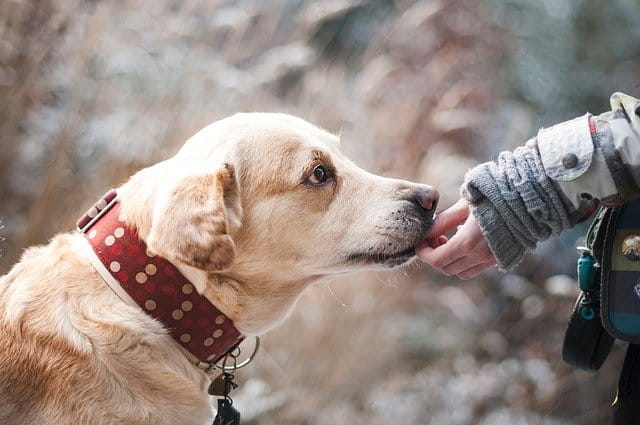
Where Should I Pet a Dog Then?
While your pooch will probably enjoy being petted in many areas of the body, he’ll find certain areas more enjoyable than others.
These areas often include;
The Ears
Dogs loved to be rubbed on their ears. Their favorite areas are usually just near the base, around most of the cartilage.
Gently pet the area, including the surrounding jaw and neck, and for even more relaxation, you can also massage the tips of his ears. If you do it right and long enough, your pooch may even drift off to sleep.
The Belly
Dogs will naturally roll over and be vulnerable around you once they grow comfortable with you. They love belly rubs.
When a dog does this, seize the opportunity to give him a gentle rub on the belly. Some may even point you in the right direction by kicking. Patiently try to figure out which his favorites are by petting several areas around his tummy.
Back and Shoulder
Like humans, dogs enjoy their shoulders and backs massaged. However, note that you can only do this with a dog you’re familiar with.
Also, when petting a dog on his back and shoulders, some level of vigorous petting will usually not trigger any form of aggressiveness. This is because of the fur and skin in these areas, so they’re likely to find it enjoyable.
Upper Chest
Canines generally enjoy having their chests petted/scratched. Sit beside him and your hands wrapped around his body, then scratch or pet the chest region.
Note however that because this petting type requires some level of closeness so you should only do it with dogs you’ve formed a close relationship with.
Butt and Hip Area
Our pooches love to be pet in this area, and when done right, you’ll probably drive yours insane with it.
Thoroughly pet the entire area starting from one hip to the butt and then over to the other hip. Also, spend some time in the tail base as many canines enjoy being pet there.
The butt and hip areas are also two areas any dog that is friendly towards you will enjoy getting petted. Plus, it can be an effective way to improve your friendship with your new pooch or even your neighbor’s.
Making the Most of a Petting Session
While petting any canine is clearly nowhere near brain surgery, there are still helpful tips you can implement to make the most of it.
Do Not Over-Stimulate Your Pooch
It is natural for your dog to get fired up with a good petting but encourage him to stay calm as you pet him.
If he shows signs of overstimulation, you should gradually slow things down and pet him around his ears for a while. I have known the latter to calm dogs and should work on your pooch as well.
That said, overstimulating your pooch isn't necessarily bad in certain instances. For example, a high energy dog such as the GSD could use an especially stimulating petting session to burn excess energy.
Regulate the Pressure
With many dogs, you want to use gentler pressure in certain areas. However, not every dog will enjoy a very gentle petting.
Many dogs, especially big, playful, high-energy, and confident ones, will enjoy a more vigorous touch. Smaller, shy pooches such as the Frenchies or Chihuahuas will usually appreciate a gentler touch.
However, these are still generalizations. So, ensure that you read your fur baby and calibrate the pressure accordingly. Soon, you’ll be able to tell the type of pressure he enjoys most.
Again, different areas will usually require different pressure levels, so know which areas your dog needs a certain level of pressure and work accordingly as you evenly spread the love around his body.
Know When to Stop
Of course, petting can’t go on an entire day. Stopping in this sense refers to knowing when to end a petting session if your canine does not seem to be a huge fan of petting.
If you notice your dog is timid, licks his lips, or gives a white side-eye when getting petted, he may not be a “fan” of this activity. It would be best if you stopped at this point instead of trying to force him to like it. You should also not stroke or pet a barking or an aggressive dog.
If, on the other hand, your dog becomes insistent about getting rubs or scratched, you should stop as well. One of such signs of this behavior is observing him trying to “nose” your hand into the proper position or crawling up uninvited on your lap after he decides by himself that he is deserving of a massage or scratch.
While some may find this behavior annoying, you shouldn’t scold him for wanting a rub every time. Remember that just like humans, they enjoy touches, and expecting them to refrain from “demanding” for it every time would be asking for too much.
A simple “no” would do when he demands for petting or rubs “unnecessarily.” When he gets it, you want to make sure it was worth the wait for him.
Final Words
Tell us; Does your dog enjoy being pet? If he does, do you give it sparingly or shower him with it? We’d like to read about the petting experience with your canine. Share in the comment section below.
About the Author
Kirsten Heggarty
Kirsten created The Pet Handbook with the aim of sharing her knowledge about pets, pet food, healthy habits, and more. All of her advice is based on years of her own experience with her pets, and feedback that she has received from grateful readers about her tips. If you want to know more please read the About Me page.

